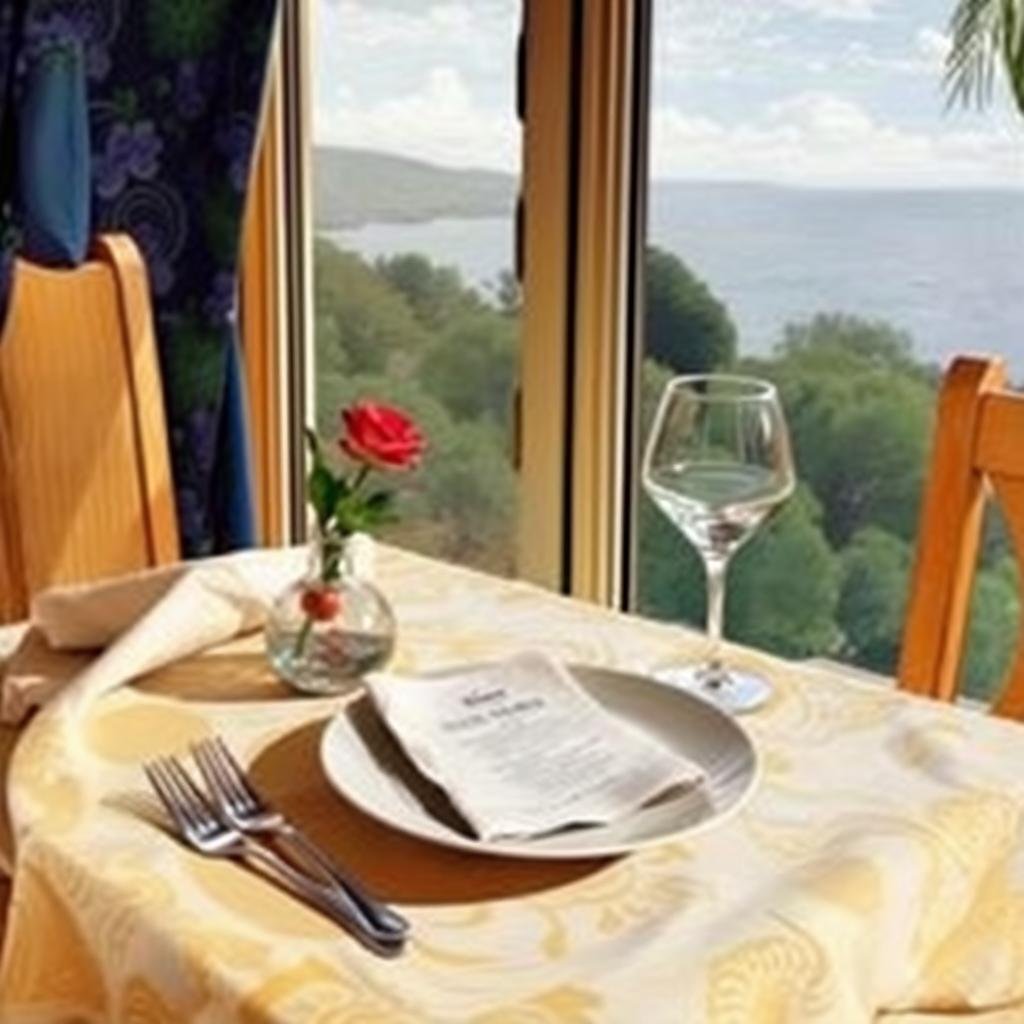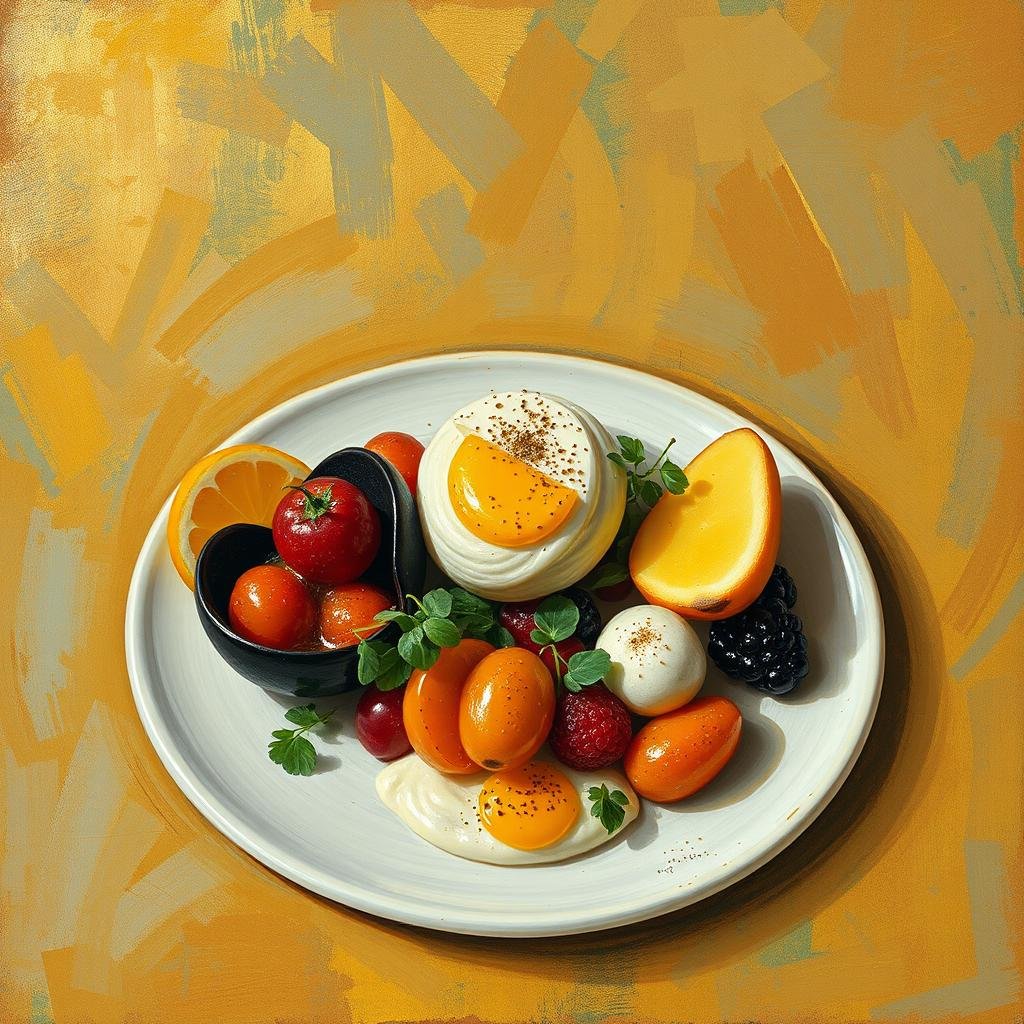🍇 Ode Platter
For this one, let’s go a little more lush, musical, full of praise — because odes are the feasts of feeling.
Here’s a mini “Ode” we could serve alongside the Ode Platter:
🍇 Ode to the Ode Platter
O tender bounty heaped in gilded light,
O generous plates where flavors dance and soar!
Each taste a crown, each spice a wingéd flight,
Each morsel sings — and hungers no more.
Come, pilgrims of palate, seekers of bliss!
Find here the orchard, the vineyard, the sea.
A thousand small wonders converge in one kiss —
An Ode on a platter, awaiting thee.
✨ Why this works
- Form: Musical, elevated language (hallmark of odes).
- Mood: Reverent, lush, celebratory — praising the idea of abundance and sensory delight.
- Subtle teaching: Without saying “odes are lyrical praise poems,” readers feel it.
🧠 Quick Creative Note
You could even have different odes each day depending on “what’s being served” — a rotating “Ode of the Day”! 🌟

Perfect! ☀️
This image deepens the feeling beautifully … it’s intimate, contemplative, like a secret table in the Poet’s Café overlooking the sea.
The menu as part of the plate is brilliant: here, poetry is literally what you “consume.” 🌹🍷
What is an ode
An ode is a type of lyrical poem that expresses feelings of admiration or praise for a particular subject, often elevated in style and tone. Odes are typically structured in a formal pattern and can celebrate various themes, including nature, love, art, or individuals. The most well-known forms of odes are the Pindaric, Horatian, and irregular odes.
Famous Musical Odes:
Ode to Joy by Ludwig van Beethoven
- Why It Was Written: This piece is the choral finale of Beethoven’s Ninth Symphony, completed in 1824. It is based on a poem by Friedrich Schiller that celebrates universal brotherhood and joy. Beethoven’s use of the Ode to Joy theme, which conveys an uplifting message about unity and humanity, has made it one of the most recognizable melodies in classical music.
Ode to a Nightingale by John Keats (poem, often set to music)
- Why It Was Written: While not a musical composition itself, this poem is frequently adapted into musical works. Keats wrote it in 1819, expressing themes of nature, transience, and the longing for transcendence. The nightingale represents beauty and the ephemeral nature of life. Composers have set this poem to music to capture its emotive depth.
Ode to the West Wind by Percy Bysshe Shelley (poem, often set to music)
- Why It Was Written: This poem, written in 1819, addresses the powerful and transformative forces of nature, embodied by the west wind. Shelley’s ode calls for renewal and change, reflecting his desire for political and social reform. Like Keats’ work, it has inspired musical adaptations that highlight its passionate themes.
An Die Freude from Beethoven’s Ninth Symphony
- Why It Was Written: This is the German title for Ode to Joy. Like the earlier example, it is an integral part of Beethoven’s Ninth Symphony and articulates a vision of joy and brotherhood among humanity, emphasizing ideals of freedom and community.
Ode to the Earth by Various Composers
- Why It Was Written: Many contemporary compositions and arrangements celebrate the environment and nature through musical odes. These works often aim to raise awareness about ecological issues and honor the beauty of the natural world.
Odes have been used throughout history to convey deep emotional responses and to honor subjects of significance, whether through poetry, music, or a combination of both. They remain a powerful form of artistic expression.
A famous one
What is a platter
A platter, in the context of food and dining, refers to a large, often decorative dish or serving tray used to present a variety of foods, typically arranged attractively. Platters are commonly utilized for serving appetizers, mains, or desserts, and they can vary widely in size, shape, and design depending on the culinary context.
Key Features of Platters
Variety: Platters often feature an assortment of items, such as cheeses, meats, vegetables, fruits, or desserts, allowing for a diverse presentation that can cater to different tastes. For example, a charcuterie platter may include cured meats, cheeses, nuts, olives, and breads.
Serving Style: Platters are typically designed for sharing, making them ideal for gatherings, parties, or family-style dining. Guests can help themselves to the different items on the platter.
Presentation: Platters are often chosen for their aesthetic appeal, contributing to the overall dining experience. They can be made from various materials, including ceramic, glass, wood, and metal, and may be elaborately decorated or simple, depending on the occasion.
Menu Context: In a restaurant or catering context, platters may be listed on menus to highlight a selection of dishes designed to be served together. For example, a seafood platter might include shrimp, crab, oysters, and various sauces.
Overall, platters play an important role in food presentation, enhancing the visual and social aspects of dining by encouraging sharing and interaction among guests.







